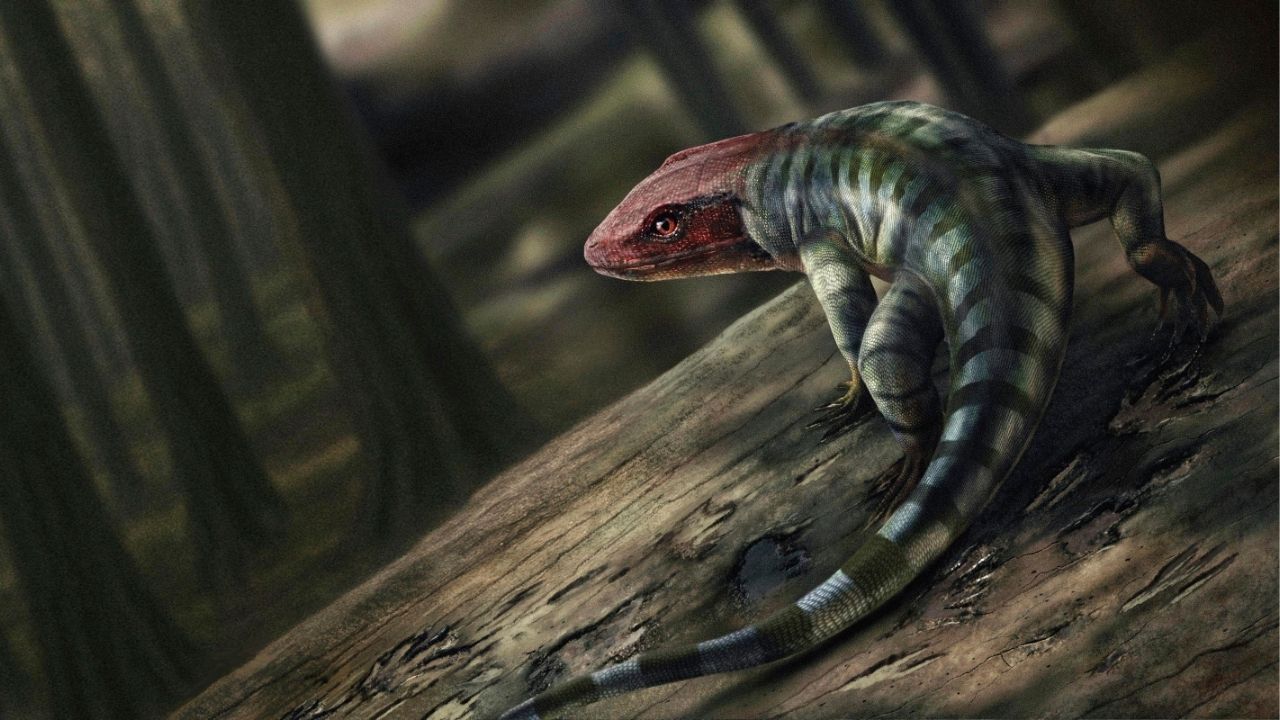This image provided by Prof. Per Erik Ahlberg shows an artist's illustration of the possible appearance of a reptile-like creature that lived around 350 million years ago in what's now Australia. The animal was around 2 ½ feet long (80 cm) and its feet has long fingers and claws, which are visible in newly discovered fossil footprints. (Marcin Ambrozik/Prof. Per Erik Ahlberg via AP)

- Fossil footprints found in Australia show the earliest known evidence of land-dwelling, clawed reptiles from 350 million years ago.
- The ancient tracks suggest reptiles evolved to live exclusively on land much sooner after emerging from oceans than scientists previously believed.
- Found near Melbourne, the clawed footprints reveal behavioral details and predate Canada’s earliest reptile tracks by over 30 million years.
Share
|
Getting your Trinity Audio player ready...
|
WASHINGTON — Scientists in Australia have identified the oldest known fossil footprints of a reptile-like animal, dated to around 350 million years ago.
The discovery suggests that after the first animals emerged from the ocean around 400 million years ago, they evolved the ability to live exclusively on land much faster than previously assumed.
“We had thought the transition from fin to limb took much longer,” said California State University paleontologist Stuart Sumida, who was not involved in the new research.
Previously the earliest known reptile footprints, found in Canada, were dated to 318 million years ago.
The ancient footprints from Australia were found on a slab of sandstone recovered near Melbourne and show reptile-like feet with long toes and hooked claws.
Scientists estimate the animal was about 2 1/2 feet (80 centimeters) long and may have resembled a modern monitor lizard. The findings were published Wednesday in Nature.
Claws Are a Crucial Identification Clue
The hooked claws are a crucial identification clue, said study co-author and paleontologist Per Ahlberg at Uppsala University in Sweden.
“It’s a walking animal,” he said.
Only animals that evolved to live solely on land ever developed claws. The earliest vertebrates — fish and amphibians – never developed hard nails and remained dependent on watery environments to lay eggs and reproduce.
But the branch of the evolutionary tree that led to modern reptiles, birds and mammals – known as amniotes — developed feet with nails or claws fit for walking on hard ground.
“This is the earliest evidence we’ve ever seen of an animal with claws,” said Sumida.
At the time the ancient reptile lived, the region was hot and steamy and vast forests began to cover the planet. Australia was part of the supercontinent Gondwana.
The fossil footprints record a series of events in one day, Ahlberg said. One reptile scampered across the ground before a light rain fell. Some raindrop dimples partially obscured its trackways. Then two more reptiles ran by in the opposite direction before the ground hardened and was covered in sediment.
Fossil “trackways are beautiful because they tell you how something lived, not just what something looked like,” said co-author John Long, a paleontologist at Flinders University in Australia.
RELATED TOPICS:
Categories

Takeaways From US Election Night 2025



















